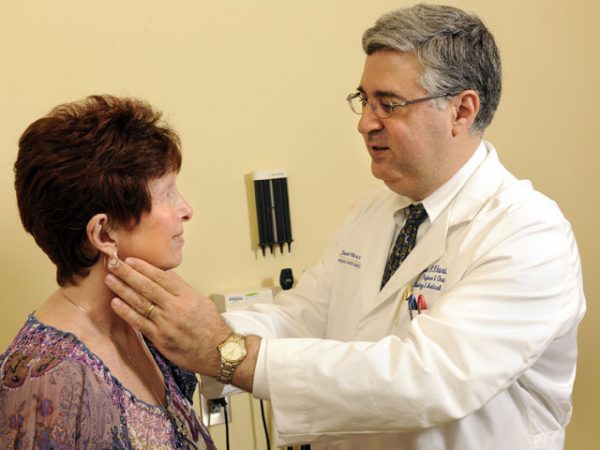SABCS 2020: Exploring Safe De-escalation of Breast Cancer Treatment
Several options are available for the treatment of breast cancer, including local therapies such as surgery and radiation therapy, as well as systemic therapies such as chemotherapy, hormone therapy, targeted therapy, and immunotherapy. While these treatments can be highly effective, they can also be associated with various physical, psychological, and financial burdens. Therefore, there is interest in understanding which treatments can be safely avoided without negatively impacting patient outcomes.
Several presentations from the San Antonio Breast Cancer Symposium, held online December 8-11, explored the de-escalation of breast cancer therapy, including the omission of radiation therapy, chemotherapy, or surgery in select patient populations.
Omitting Postoperative Radiation Therapy in Older Patients with HR-positive Breast Cancer
Patients over the age of 65 who are diagnosed with less aggressive breast cancers often undergo breast-conserving surgery, and despite the less aggressive nature of their cancer, they continue to be treated with whole breast radiation therapy after surgery. Clinical trial results presented at SABCS suggested that many of these patients may be able to safely avoid postoperative radiation therapy.

Ian Kunkler, FRCPE, professor of clinical oncology at the Western General Hospital, University of Edinburgh, presented updated 10-year data from the PRISM II clinical trial, which examined the impact of radiation therapy on clinical outcomes in 1,326 patients with nonmetastatic hormone receptor (HR)-positive breast cancer. All patients were at least 65 years of age, had undergone breast-conserving surgery, and were receiving adjuvant hormone therapy. Patients were randomly assigned to either receive or not receive radiation therapy after surgery.
Consistent with earlier data from this trial, the 10-year follow-up data presented at the symposium showed that the rate of local recurrence after 10 years was significantly greater in patients who did not receive radiation therapy compared with patients who did (9.8 percent vs. 0.9 percent). Patients whose breast cancers expressed low levels of the estrogen receptor had a significantly higher rate of local recurrence compared to those with high estrogen receptor expression.
Despite the effects on local recurrence, postoperative radiation therapy did not significantly impact certain other clinical outcomes in these patients. After 10 years, patients who did not receive radiation therapy had similar rates of distant metastasis (1.9 percent vs. 3.6 percent), recurrence in the opposite breast (1.2 percent vs. 2.2 percent), metastasis-free survival (98.1 percent vs. 96.4 percent), and overall survival (80.4 percent vs. 81.0 percent) as patients who did receive radiation therapy.
“We recognize there is a persistent risk of local recurrence, particularly in the nonirradiated group…but importantly, there is no compromise in terms of mortality,” said Kunkler, suggesting that omitting postoperative radiation therapy should be an option for select patients. He acknowledged that each patient’s decision on whether to undergo or skip radiation therapy would likely depend on various factors, including their concerns about recurrence and the hardships of radiation therapy.
Omitting Adjuvant Chemotherapy in Postmenopausal Patients with Early-stage, Low Risk Breast Cancer
Results from another study, presented by Kevin Kalinsky, MD, MS, director of the Glenn Family Breast Center at Winship Cancer Institute of Emory University, suggested that some postmenopausal patients with early-stage breast cancer and a low risk of recurrence could safely skip adjuvant chemotherapy.

MD, MS
Kalinsky reported interim results from the SWOG S1007 RxSPONDER clinical trial, which examined the impact of several factors on the clinical benefit of adjuvant chemotherapy in select patients. The trial enrolled 5,083 patients with stage 2 or 3 HR-positive, HER2-negative breast cancer. All patients had cancer involving one to three axillary lymph nodes and had a recurrence score of 25 or lower, as determined by the Oncotype DX test. Patients were randomly assigned to receive either hormone therapy plus chemotherapy or hormone therapy alone.
Kalinsky and colleagues found that the clinical benefit of adjuvant chemotherapy in this population was not dependent on recurrence score but was dependent on the patient’s menopausal status. Premenopausal patients who received hormone therapy plus chemotherapy had a significantly higher five-year invasive disease-free survival (IDFS) rate compared to those receiving hormone therapy alone (94.2 percent vs. 89 percent), indicating that adjuvant chemotherapy was beneficial for these patients.
In contrast, adjuvant chemotherapy did not appear to benefit postmenopausal patients in this study, as the five-year IDFS rate was similar for both treatment arms (91.6 percent for hormone therapy plus chemotherapy vs. 91.9 percent for hormone therapy alone).
Based on these data, Kalinsky concluded that, “Postmenopausal women with one to three positive nodes and recurrence score 0 to 25 can likely safely forego adjuvant chemotherapy without compromising IDFS.”
Should patients with ductal carcinoma in situ undergo surgery?
This year’s SABCS also included a debate on the omission of surgical therapy in patients with ductal carcinoma in situ (DCIS), which is a noninvasive breast cancer. Shelly Hwang, MD, a surgical oncologist and professor of surgery and radiology at Duke University, argued in favor of omitting surgery and instead pursuing active surveillance for patients with DCIS, while Sarah McLaughlin, MD, a surgeon and professor of surgery at the Mayo Clinic in Jacksonville, Florida, opposed the omission of surgery.
Hwang argued that surgical treatment of DCIS is associated with physical and psychological side effects with little long-term benefit. She cited data showing that 25 to 40 percent of women who underwent surgery to treat DCIS continued to experience pain several years later, and that surgery did little to alleviate patients’ fears about recurrence. Hwang also argued that omitting surgery may not dramatically increase the risk of death or progression to invasive breast cancer. She presented data showing that among patients with low-risk DCIS, those who underwent surgery had a 3 percent risk of progression, compared with 6 percent for patients who did not have surgery. “This…highlights the low risk of invasive progression overall, even in the absence of surgery,” she said.
In contrast, McLaughlin cited recent data showing that delays in surgery caused by the COVID-19 pandemic were associated with an increased risk of invasive progression in patients with DCIS. However, Hwang noted that the five-year relative survival rates for DCIS compared with early-stage invasive breast cancer are almost identical (98.9 percent vs. 99 percent). Thus, she reasoned, even if patients were to progress, there would not be much impact on their overall survival.
While studies have shown similar survival rates between patients who did and did not undergo surgery, McLaughlin explained that most of the patients in these studies received hormone therapy even if they did not have surgery. This raises the possibility that hormone therapy is required to maintain similar outcomes in patients who do not undergo surgery. If this is the case, then omission of surgery would not be a viable option for all patients, as some may not be eligible for hormone therapy, and many patients may not adhere to the treatment regimen, she explained.
McLaughlin also argued that omitting surgery in favor of active surveillance may not lessen the long-term financial burden for patients, as active surveillance would require imaging tests and potential biopsies throughout the patient’s life. Furthermore, she stated that the overwhelming consensus among physicians is that surgical treatment should be pursued in patients with DCIS except for specific situations where comorbidities or the patient’s age may prevent surgery. Hwang, however, mentioned that a small survey of clinical investigators showed that approximately 80 percent of respondents were open to omitting surgery in some patients with DCIS.
Despite their opposing views, both McLaughlin and Hwang agreed that this topic requires more investigation. McLaughlin believes that existing data do not support omitting surgery in patients with DCIS, but she endorses pursuing it further in clinical trials. Likewise, Hwang discourages active surveillance for patients with DCIS outside of clinical trials but is optimistic that de-escalation of surgery for these patients will prove to be a viable option.
Safe de-escalation of treatment has the potential to improve quality of life for patients by reducing or eliminating many of the burdens associated with cancer therapy. As highlighted by these three discussions from SABCS, emerging evidence indicates that this approach may be an option for some patients with breast cancer.



